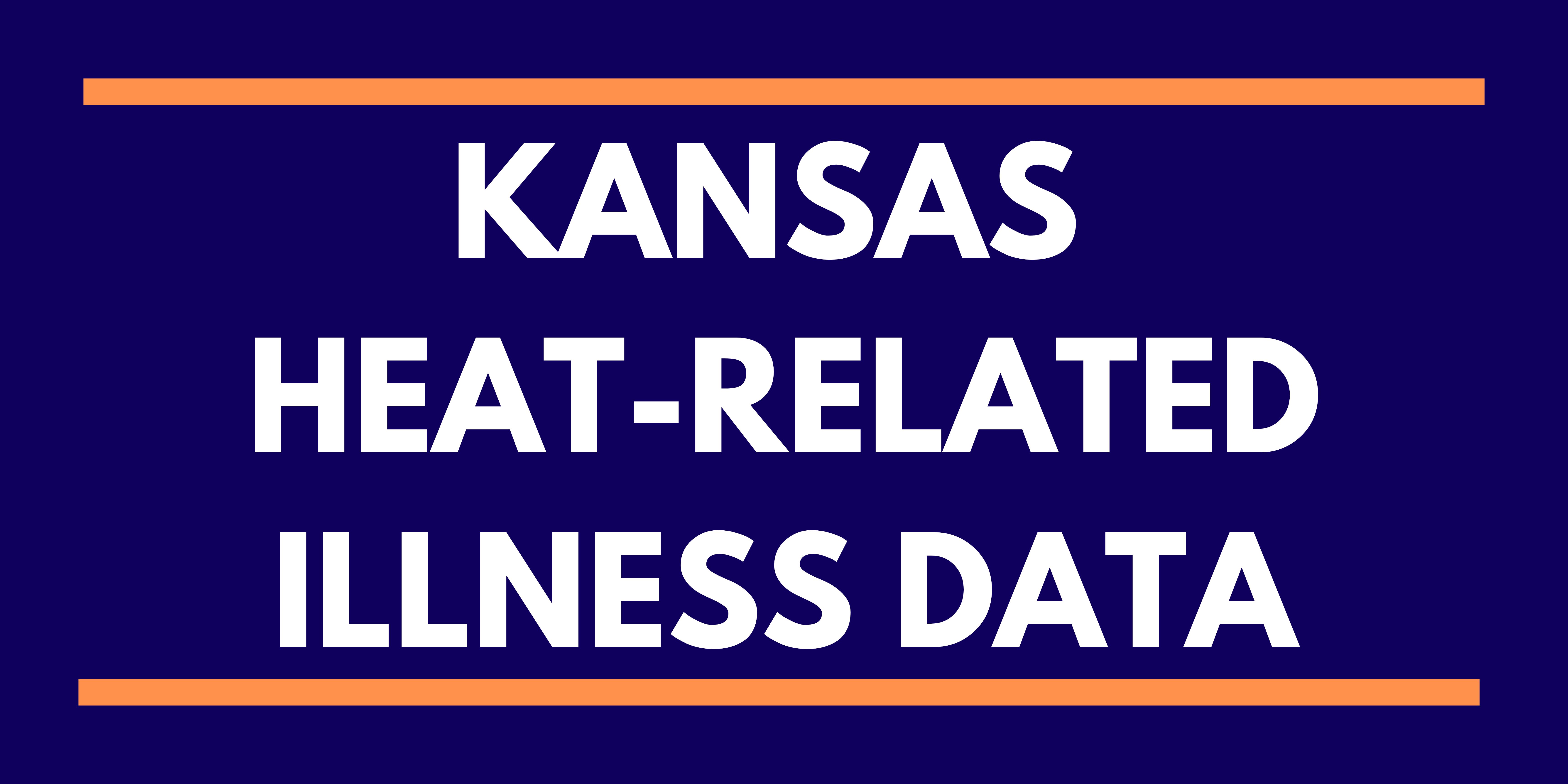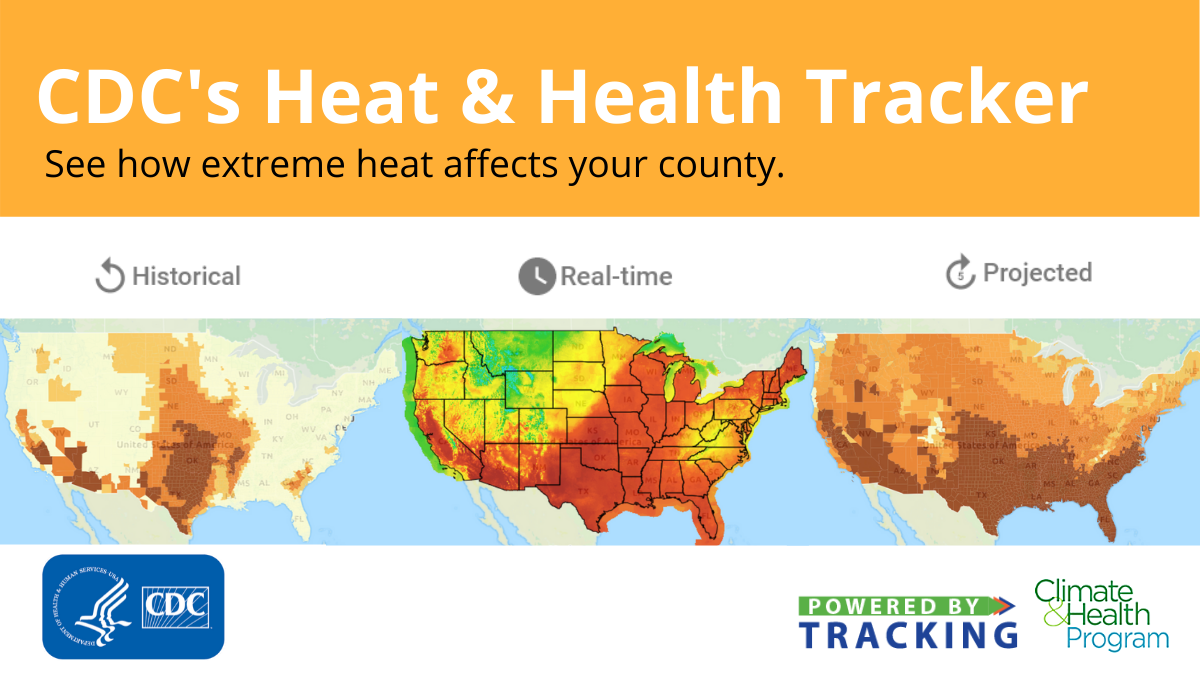Daily Heat-Related Illness Emergency Department Visits Graph
Explore Kansas Heat-Related Illness Data
To explore heat-related illness data, click on the icon below:

Heat Stress Illness
Extreme outdoor heat can lead to a variety of health conditions ranging from minor health problems, such as heat rash, to serious illnesses, such as heat stroke and even death. Heat stress occurs when the body cannot get rid of excess heat. It can be prevented by taking appropriate precautions. According to the National Oceanic Atmospheric Administration (NOAA), extreme heat is the leading cause of weather related deaths in the United States. While heat can negatively affect everyone, there are populations that are more susceptible to heat illnesses than others that includes, young children and infants, older adults, pregnant women, those with special needs, and those who work outside. Based on the Kansas Syndromic Surveillance System data from, May 1st to June 18th of this year, young adult males had the highest number of Emergency Department visits for heat related illnesses. Being prepared when excessive heat is in the forecast can help prevent severe health outcomes and death. As a reminder, people living in cities may experience higher temperatures than in outlying areas, hence the notion of heat islands.
Heat Islands
Heat Islands are a result of cities replacing natural land cover with buildings, streets, and sidewalks. This allows for temperatures in large cities to be 2 to 22 degrees higher than its rural surroundings. Heat islands can cause an increased risk for adverse health effects during extreme heat events. For more information please visit Heat Island Outreach Materials.
UV Index Safety and Resources
- Do Not Burn or Tan: Avoid intentional tanning. It may contribute to skin cancer and premature aging of skin.
- Seek Shade: Get under cover when the sun's rays are the strongest between 10 A.M. and 4 P.M.
- Wear Protecting Clothing: Wear long-sleeved shirts and pants and a wide-brimmed hat as well as UV-blocking sunglasses.
- Generously Apply Sunscreen: Use a Broad Spectrum sunscreen with a Sun Protection Factor (SPF) of 30 or higher for protection from ultraviolet A (UVA) and ultraviolet B (UVB) rays, which contribute to premature aging, sunburn, and skin cancer. Always follow the label directions and apply sunscreen generously. Apply 15 minutes before going outdoors and reapply every two hours, or after swimming, sweating, or toweling off. Choose sunscreens without chemicals harmful to marine life.
- Use extra Caution Near Water and Sand: These surfaces reflect the damaging rays of the sun, which can increase your chance of sunburn.
- Check the UV Index Every Day: The higher the UV index, the more you should do to protect yourself from the sun. When planning outdoor activities, follow EPA's safety recommendations.
- Get Vitamin D Safely: While the skin needs sunlight to help manufacture vitamin D, which is important for normal bone health, overexposure to UV light can be detrimental by damaging and killing skin cells. The National Council on Skin Cancer Prevention recommends obtaining vitamin D through food and supplements, not through UV rays.
- Protect Those at Risk from UV Rays: Children, the elderly, and those with special needs may need special attention or be more sensitive to the sun. Children tend to spend more time outdoors, can burn more easily, and may not be aware of the dangers of UV exposure. Babies younger than 6 months should be kept out of direct sunlight and protected from the sun using hats and protective clothing.
Resources:
CDC Heat and Health Tracker

(click on the above image to visit the Heat and Health Tracker)
Tips for Preventing Heat Stress Illness
Additional Resources
- Good Samaritan Law: Protection for removing a vulnerable person or domestic animal from a vehicle
- No Heat Stroke: Pediatric vehicular heatstroke statistics and prevention